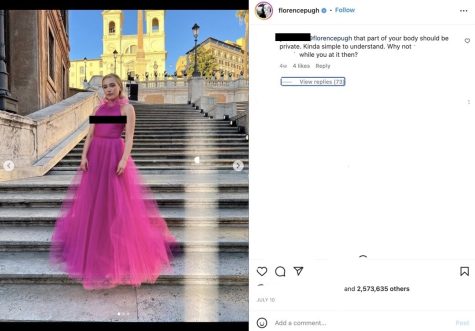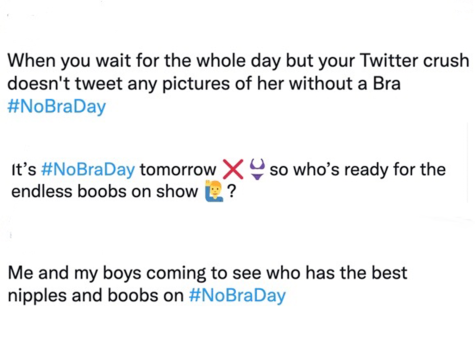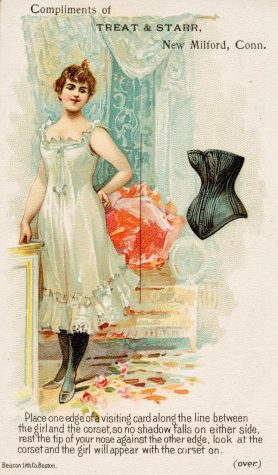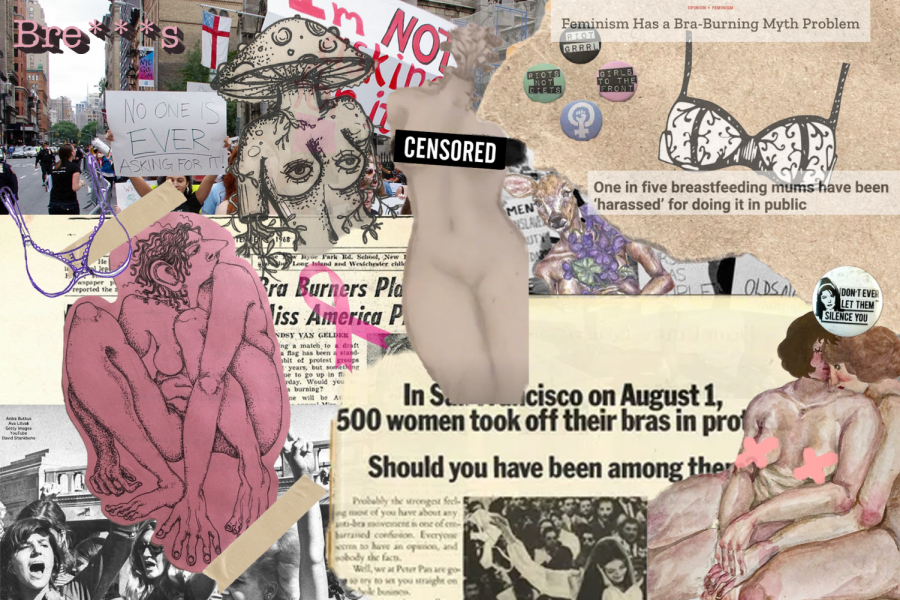Running and swimming without a shirt are just two things that men have the privilege to do but women cannot.
Sprouting from the 2012 protest in New York, freeing and uncensoring women’s bodies, specifically their chests, has become more prevalent in today’s society. Normalizing women not wearing bras has released the societal gender roles for how women are “allowed” to dress. Showing any sort of breasts is strongly looked down upon especially within the male gaze.
“Not only can bras be restricting to movement, but they’re generally uncomfortable. It’s very difficult to find the exact bra size that’s perfect for you, so many aspects of the bra can be uncomfortable,” said senior Samantha Kosman.
The modern braless movement really took forward in the media after popular celebrities like Kendall Jenner and Miley Cyrus have been photographed in outfits without bras. The controversy stirred up as many speculated how it is “inappropriate” and “vulgar.”

With much negative feedback, many women like Rihanna and more recently, actress and “Midsommar” star Florence Pugh started advocating at popular movie premieres and mainstream red-carpet events.
While this movement mainly started in the media through mouth-to-mouth and protests, the statement really took off in places like New York and in modern microtrends.
“I think women not wearing bras is heavily stigmatized because society pushes the narrative that women choosing to be braless is them wanting to be sexualized,” Kosman said.
Further, while a sense of empowerment and femininity, many men have used the movement as an excuse to further sexualize women. Apart from the backlash of the braless movement being seen as an insignificant form of feminist protest stemming from the Bra Burner protest in 1969 after a Miss America Pagent, men have used it to further sexualize women.
Countless tweets from accounts of men have supported a similar movement, #NoBra day on Oct. 13, but in sexual and objectifying contexts.
Though breasts, through years and years, have been seen as a form of sexual desire and intimacy, it is a body part that men can freely show off, but women can’t. Even normal human functions like breastfeeding in public spaces, crucial to fetal development, have been looked down upon, stirring controversy, which in hand, has also turned into a male sexual pleasure.

Dating back to the 15th century, corsets became a huge fashion staple in the time period. With a tight waist and accentuated breasts, corsets were the first model of bras.
After the boom of corsets, the bra was invented due to shortages of materials for the war. With the growing popularity of the reinvented bra around the 1920s, bras became more accessible with inclusive sizes in which the modern breast size measurements were founded, ranging from an A cup to a D cup.

While creating a useful everyday invention, the bra became a societal norm that was associated with misogynistic connotations. It wasn’t until the 1960s, with the new feminism movement, that going braless became a statement of feminism and anti-gender norms. Along with leisure and comfort, going braless for crucial activities like breastfeeding has become stigmatized.
In a 2000 study by E. McIntyre, 82% of respondents said that women bottle feeding was more acceptable that breastfeeding in public. An additional 48% of the men in the study found that breastfeeding in public disturbs them.
“Often I think we sexualize this (breastfeeding) when we see it in public, saying it’s ‘too revealing’ or ‘inappropriate,’ but I think saying things like this is nothing short of insensitive and disrespectful. To sexualize something so sacred between a mother and her baby is very disgusting, considering that this moment is pure and perfectly normal,” said senior Mirabella Villanueva.
Not only does breastfeeding nurture early infants’ bodies, but creates a mutual and intimate bond between a mother and her child.
Infants require around 20 ounces of breastmilk per day for emotional and physical development, making breastfeeding frequent in everyday motherhood, including in public spaces.
“You don’t see people sexualizing men while going on a jog with their shirt off, or people wearing a bathing suit on the beach, so why is a mother feeding her baby any different?” Villanueva said.
While women’s breasts won’t fully become normalized for a while, exercising the choice, to wear or not, is a feminine right. Female breasts, although biologically different from men’s, are a normal body part and go beyond sexual connotations, and are important for fetal development.
“While bras certainly have their benefits, the choice to wear one should be ultimately up to the individual wearing them… not anyone else,” Kosman said.












